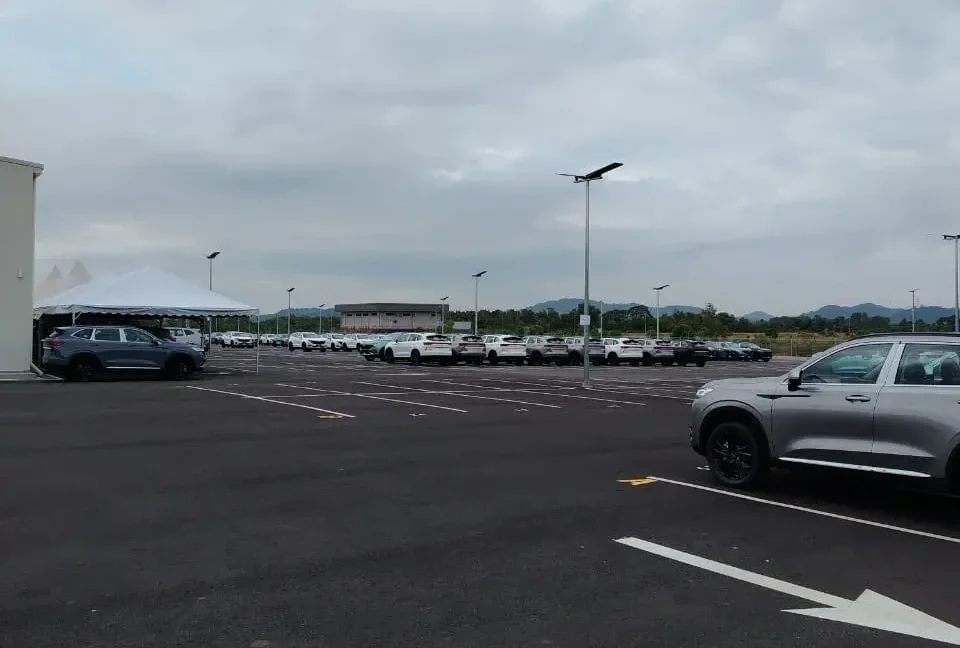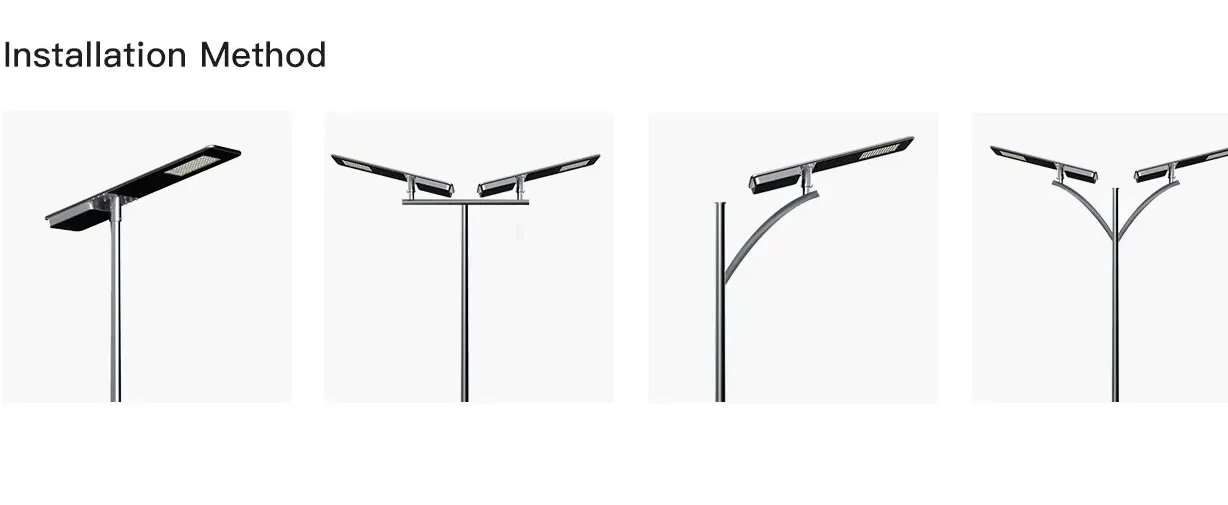Project Background and Demand Analysis
1. Project Background
Malaysia, located in the tropics, experiences high temperatures, heavy rainfall throughout the year, and frequent typhoons during the rainy season. This necessitates outdoor lighting equipment with excellent waterproof, wind-resistant, and high-temperature tolerance capabilities.
The open-air parking lot previously relied on conventional utility street lights characterized by high energy consumption, high maintenance costs, and insufficient nighttime lighting. To address these challenges, the project aims to upgrade the lighting system to a more intelligent and sustainable solution.
2. Key Requirements
-
Environmental Adaptability: The equipment must have an IP65 protection rating or higher, with a hurricane-resistant structure to ensure stable operation under heavy rain, typhoons, and high temperatures.
-
Energy Efficiency: Maximize solar power utilization to minimize grid dependency, significantly reduce operating costs, and align with the national green energy policy.
-
Safety Enhancement: Improve nighttime illumination coverage and luminance, eliminate blind spots in the parking lot, and ensure the safety of vehicles and pedestrians.
-
Rapid Deployment: Utilize modular, pre-assembled components that support flexible customization, adapt to different site layouts, and shorten the construction cycle.
Technical Solution Design
Core Product: BASALT SSL-910A Solar Street Light
| Features | Specific Technology |
|---|---|
| Weatherproof Design | – IP65 integrated aluminum alloy frame – Tempered glass lampshade – Hurricane-resistant structural design |
| Intelligent Power Supply System | – Monocrystalline silicon high-efficiency solar panels – High-capacity energy storage battery with ≥5 days of continuous operation in rainy weather – TCS temperature control technology ensures battery stability under extreme temperatures |
| Dynamic Dimming Function | – ALS2.4 Patented Light Sensing and Sensor System automatically adjusts brightness (30%-100%) based on environmental brightness and vehicle/pedestrian activity, achieving an annual energy savings rate of ≥30% |
| Lighting and Sensing | – Single lamp covers a wide angle with 45-meter spacing; 20 lamps ensure no blind spots – 120° PIR sensor triggers brightness enhancement within 8 meters |
| Modular Installation | – Pre-installed brackets and electrical components – On-site rapid assembly reduces construction time by 50% |
1. Implementation Process
-
Scenario Planning: 3D modeling is used to analyze the parking lot’s topography and traffic flow, optimizing light pole spacing (10 m height, 45 m spacing).
-
Foundation Construction: The pre-embedded parts are reinforced with C20 concrete to a depth of 1.2 meters, enhancing resistance against typhoons.
-
Rapid Assembly: Modular poles and solar modules are assembled on-site, minimizing disruption to parking lot operations to ≤10% during construction.
-
System Commissioning: The PIR sensor sensitivity is calibrated, intelligent dimming modes are set, and the remote monitoring platform is connected for real-time power and fault monitoring.
2. Quality Control
-
All implementation team members are trained locally and adhere strictly to the Malaysian Standard for Road Lighting MS 828:2017.
-
Each lamp undergoes waterproof (IP65) and wind pressure (IK08) tests to ensure reliable operation under extreme weather conditions.
-
A 72-hour continuous rain simulation test is conducted before delivery, achieving a 100% pass rate.
Project Achievements and Social Value
1. Quantitative Results:
-
Energy Saving and Emission Reduction: The project reduces carbon emissions by approximately 40 tons annually, cutting electricity costs by 85%.
-
High Reliability: No failures have occurred within 12 months of operation, with a 100% compliance rate for lighting during cloudy and rainy weather.
-
Safety Enhancement: The rate of nighttime accidents has decreased by 55%, with 98% of parking lot operators and users expressing satisfaction.
2. Demonstration Effect:
-
Regional Impact: The project serves as a benchmark for large-scale application of dynamic dimming technology in Southeast Asia, setting a model for green infrastructure development.
-
Community Impact: Improved nighttime security attracts commercial investment, contributing to regional economic development.
-
Environmental Impact: The use of recyclable materials and lead-free technology reduces the life cycle carbon footprint by 35%, demonstrating sustainable design principles.
Risk Identification and Response Strategy
| Risk Type | Response Measures |
|---|---|
| Extreme Weather (Typhoon) | – Increase light pole foundation depth to 1.2 m – Implement hurricane-resistant structure (IK08) |
| Prolonged Rainy Periods | – Install redundant backup battery packs with ≥7 days of endurance – Enable real-time remote monitoring and alerts |
| Complex Terrain | – Conduct 3D light simulation prior to construction – Utilize lightweight, modular components with flexible positioning |
The project has effectively addressed the lighting challenges in the open-air parking lot in Malaysia’s hot and rainy environment through the implementation of the BASALT SSL-910A Solar Street Light. The project not only achieves significant energy savings and safety improvements but also serves as a replicable and sustainable green lighting solution for Southeast Asia and other tropical regions.
Moving forward, the project will continue to demonstrate the core value of solar energy technology in upgrading public infrastructure, supporting regional development, and promoting sustainable, eco-friendly solutions.

